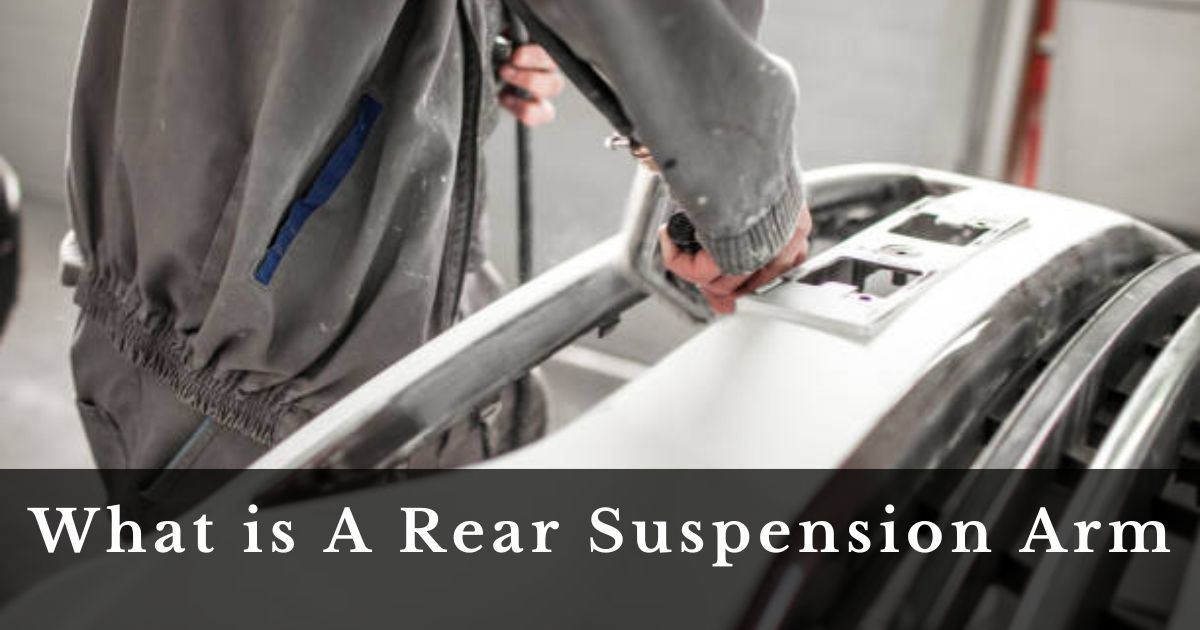What is a rear suspension arm, Rear suspension arms may seem complicated, but they’re really important parts of your car’s suspension system. Imagine them as the backbone that holds up the rear wheels of your car, making sure you have a smooth and stable ride. Let’s explore what these arms are, how they do their job, and why they’re so important for your vehicle.
Rear suspension arms play a crucial role in the smooth functioning of a vehicle’s rear suspension system. In this guide, we’ll delve into what rear suspension arms are, how they work, and why they are essential for your vehicle’s performance.
What Are Rear Suspension Arms?
Rear suspension arms, also known as control arms or trailing arms, are vital parts of a vehicle’s suspension system. They connect the rear axle to the car’s chassis, providing support and controlling the movement of the wheels. Think of them as the link between the wheels and the body of the car.
Components of Rear Suspension Arms
Rear suspension arms consist of several components, including bushings, joints, and mounting points. These components work together to provide stability and control to the rear wheels.
How Do Rear Suspension Arms Work?
Rear suspension arms are designed to absorb and distribute the forces generated during driving, such as bumps, potholes, and cornering. They pivot at various points to allow the wheels to move up and down while maintaining proper alignment with the chassis.When your car hits a bump or encounters rough terrain, the rear suspension arms play a crucial role in absorbing shocks and vibrations. They pivot and move up and down, allowing the wheels to maintain contact with the road surface. This motion helps to minimize bouncing and keeps the vehicle stable, providing a comfortable ride for passengers.
Types of Rear Suspension Arms
There are different types of rear suspension arms, including:
Control Arms: These arms connect the rear axle to the chassis and help control the vertical movement of the wheels.
Trailing Arms: These arms support the weight of the vehicle and help maintain proper alignment of the wheels.
Toe Control Arms: These arms control the side-to-side movement of the wheels, ensuring stability during cornering.
Importance of Rear Suspension Arms
Rear suspension arms play a vital role in ensuring a smooth and comfortable ride. They help absorb shocks and vibrations, reduce noise, and improve handling and stability.
Benefits of Well-Maintained Rear Suspension Arms
Improved ride comfort
Better handling and stability
Reduced tire wear
Enhanced safety
Rear suspension arms are essential components of a vehicle’s suspension system, contributing to its overall performance and safety. Understanding how rear suspension arms work can help you appreciate their importance and take better care of your vehicle.
FAQs (Frequently Asked Questions)
1. How do I know if my rear suspension arms are failing?
Look out for signs such as excessive noise, vibrations, uneven tire wear, or poor handling. If you notice any of these symptoms, it’s essential to have your suspension system inspected by a professional mechanic.
2. Can I replace rear suspension arms myself?
While it’s possible for experienced DIY enthusiasts to replace rear suspension arms, it’s recommended to have them replaced by a qualified mechanic to ensure proper installation and alignment.
3. Are aftermarket rear suspension arms worth it?
Aftermarket rear suspension arms can offer improved performance and durability compared to OEM (Original Equipment Manufacturer) parts. However, it’s essential to choose high-quality aftermarket parts from reputable brands.
4. How often should rear suspension arms be replaced?
The lifespan of rear suspension arms can vary depending on factors such as driving conditions, vehicle mileage, and maintenance. It’s generally recommended to have them inspected regularly and replaced if signs of wear or damage are detected.
5. Can damaged rear suspension arms affect other parts of the vehicle?
Yes, damaged rear suspension arms can affect the alignment and performance of other suspension components, leading to further damage if not addressed promptly.



